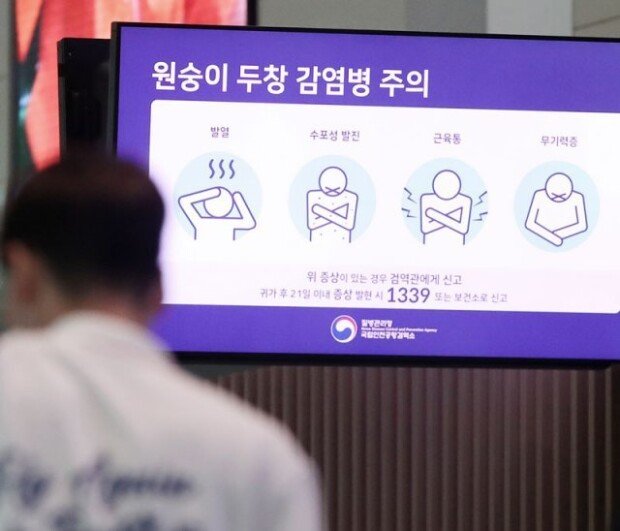Second confirmed case of monkeypox found in Korea
Second confirmed case of monkeypox found in Korea
Posted September. 05, 2022 07:52,
Updated September. 05, 2022 07:52

Korea had a second confirmed case of monkeypox. The patient who entered Korea from Germany went to see a doctor in the town four days before getting confirmed but the preventive system filtering out monkeypox did not work properly.
The Central Disease Control Headquarters (CDCH) stated Sunday that the person who entered Korea from Germany through Incheon International Airport was confirmed with monkeypox. He did not have any symptoms at the time of arrival, but had fever, headaches and felt dizzy from last Sunday. On Tuesday, however, he felt pain on the skin and went to see a doctor. The skin pain is one of key symptoms of monkeypox.
From July this year, the prevention authority registered those who visited the five countries (the U.K., Spain, Germany, Portugal, France) where monkeypox broke out to the International Traveler Information System (ITS). The system automatically sends alarm messages to the medical team if someone from a country where specific infectious disease broke out enters Korea and visits hospitals or clinics. In such case, a message saying, “The patient has visited XYZ country(ies) so please take note whether such symptoms appear” will pop up on the medical team’s monitor at the treatment reception or prescription stage.
The second monkeypox patient’s overseas travel history of visiting Germany was handed over to the medical team through ITS. However, the medical team then did not take any specific actions. An official from Seoul City stated that he remembers the medical team saw the alarm message but passed it by. The official explained that the medical team did not doubt monkeypox. According to CDCH, he did not tell doctors or nurses of having been abroad. A was classified as suspected case of monkeypox only after when A inquired the health center Sep. 1 in person and later got confirmed.
As of Sunday, the patient contacted 15 people. The prevention authority categorizes the contacts into high, medium and low risks depending on the level of risk and found out that there were no high-risk contacts among the above 15 people. The medium risk contacts whom the health center monitors symptoms for 21 days are two people including A’s family and friend.
The prevention authority considers that there is almost no risk of monkeypox spreading in the community through day-to-day contact. Monkeypox is mainly infected through close contacts including sexual contact.
ksy@donga.com







